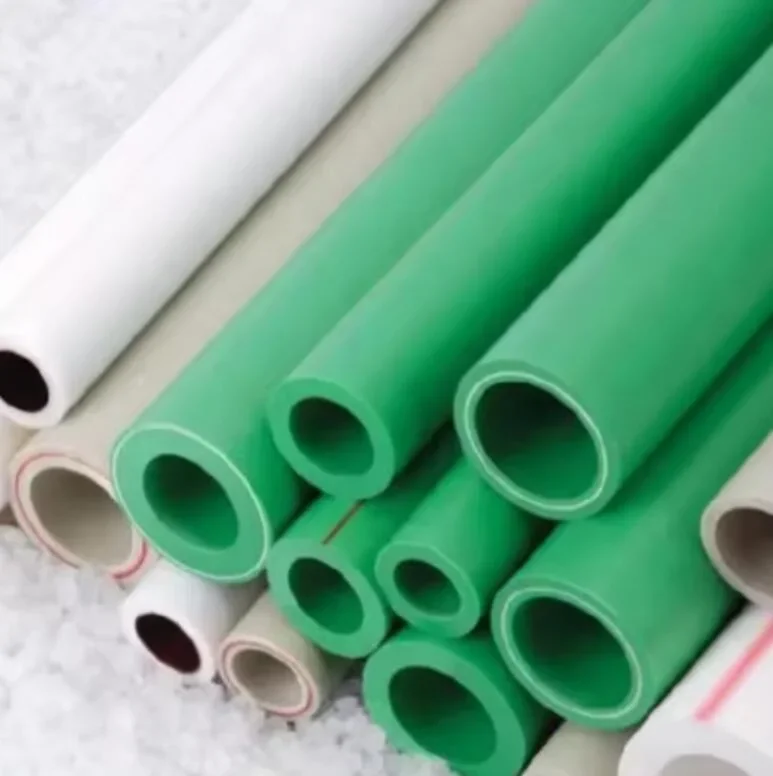Polypropylene Random Copolymer (PPR) pipes are widely used in water supply systems due to their excellent chemical resistance, durability, and heat resistance. They are favored for their ability to withstand a wide range of temperatures and pressures, making them ideal for both hot and cold water applications. In this blog post, Hangyi will share with you the manufacturing process of PPR water supply pipe for sale.
Raw Material Selection
The manufacturing process of PPR pipes begins with the selection of high-quality raw materials. The primary material used is polypropylene, which is a thermoplastic polymer. It is chosen for its resistance to corrosion, high-temperature tolerance, and ease of processing.
Key Properties of Polypropylene:
- Chemical Resistance: Resistant to a wide range of chemicals.
- Temperature Tolerance: Can handle high temperatures without deforming.
- Recyclability: Can be recycled, reducing environmental impact.
Production Process
Step 1: Compounding
The raw polypropylene pellets are mixed with additives such as colorants, UV stabilizers, and antioxidants. These additives enhance the pipe's performance and longevity. The compounding process ensures a uniform mix of the base material and additives.
Step 2: Melting
The compounded polypropylene is then melted in an extruder. The extruder uses heat and mechanical action to transform the solid pellets into a molten state, which is essential for the pipe's formation.
Step 3: Extrusion
The molten polypropylene is extruded through a die that shapes it into the desired pipe diameter and wall thickness. The extrusion process is highly controlled to ensure dimensional accuracy and uniformity.
Step 4: Cooling and Sizing
After extrusion, the hot pipe is cooled rapidly to solidify the material. This is typically done using water baths or air cooling systems. The cooling process is critical for maintaining the shape and dimensions of the pipe.
Step 5: Calibration
The pipe is then calibrated to ensure it meets the required dimensional specifications. This step is crucial for ensuring that the pipe fits properly with fittings and other components in the plumbing system.
Step 6: Annealing
Annealing is a heat treatment process that is used to relieve internal stresses in the pipe. This process improves the pipe's dimensional stability and resistance to deformation.
Step 7: Marking and Packaging
The finished PPR pipes are marked with relevant information such as the manufacturer's name, product specifications, and batch numbers. They are then packaged in a way that protects them from damage during transportation and storage.

Quality Control
Throughout the manufacturing process, quality control checks are performed to ensure that the pipes meet industry standards and customer specifications. This includes:
- Visual Inspection: To check for any visible defects.
- Dimensional Testing: To ensure the pipes meet the required specifications.
- Pressure Testing: To verify the pipe's ability to withstand the intended pressure.
- Chemical Analysis: To confirm the composition and properties of the polypropylene.
Advantages of PPR Pipes
PPR pipes offer several advantages that make them a popular choice for water supply systems:
- Longevity: They have a long service life, often exceeding 50 years.
- Low Maintenance: Require minimal maintenance compared to other types of pipes.
- Energy Efficiency: Offer good thermal insulation, reducing heat loss.
- Recyclability: Can be recycled at the end of their life cycle.
Applications
PPR pipes are used in a variety of applications, including:
- Potable Water Systems: For the supply of drinking water.
- Heating Systems: In underfloor heating and radiator systems.
- Irrigation Systems: For agricultural and landscape irrigation.
- Industrial Applications: In chemical and pharmaceutical industries for fluid transport.
Conclusion
The manufacturing process of PPR water supply pipes is a combination of advanced technology and stringent quality control measures. The result is a product that offers superior performance, durability, and reliability. As the demand for sustainable and efficient plumbing solutions grows, PPR pipes continue to be a preferred choice in the industry.
https://www.hangyipipe.com/Manufacturing-process-of-PPR-water-supply-pipe.html
Hangyi
sales@hangeasepipes.com
